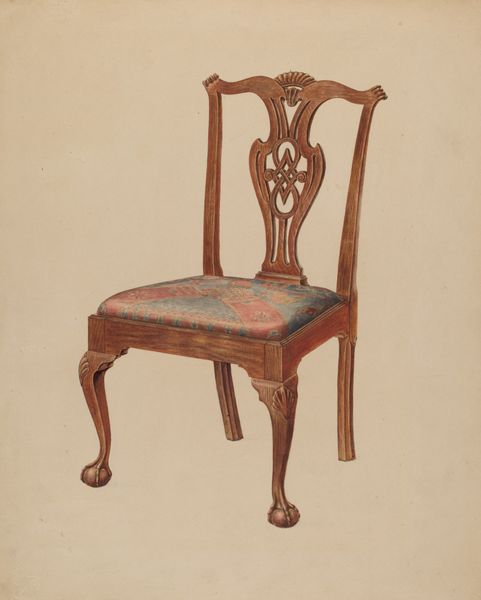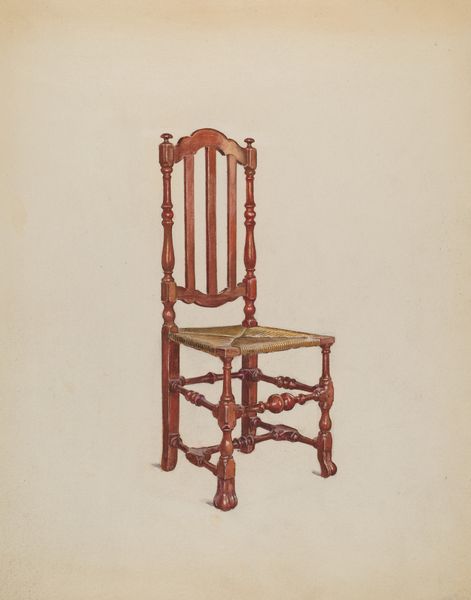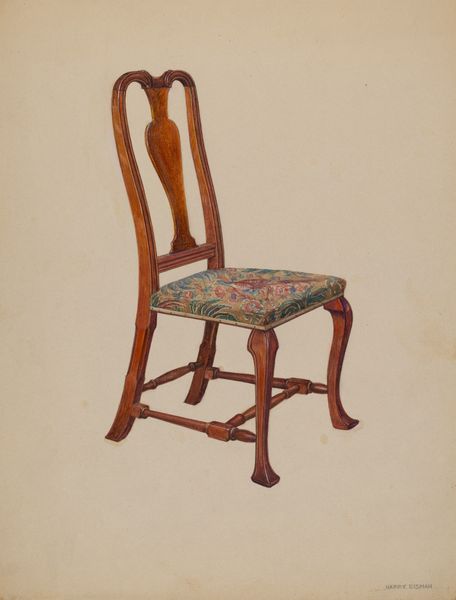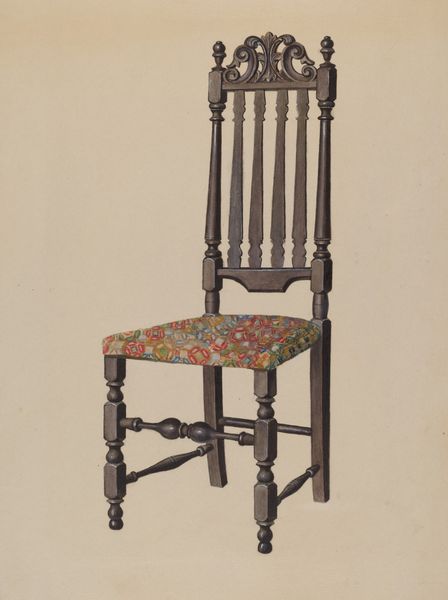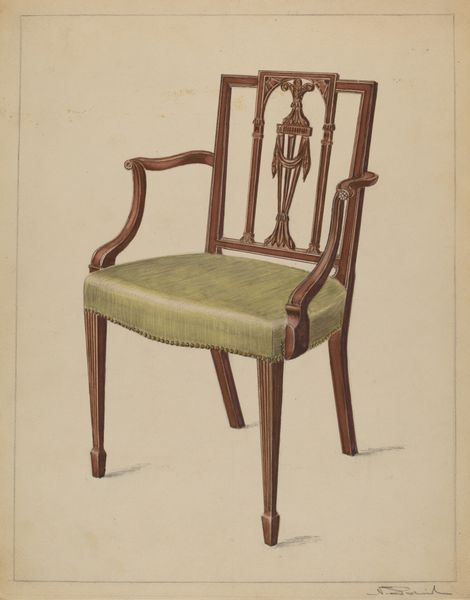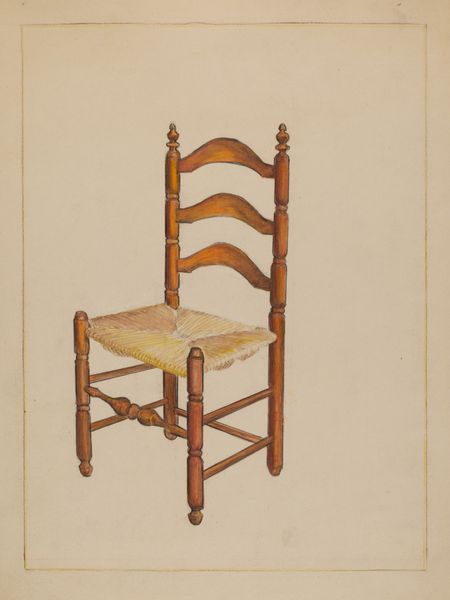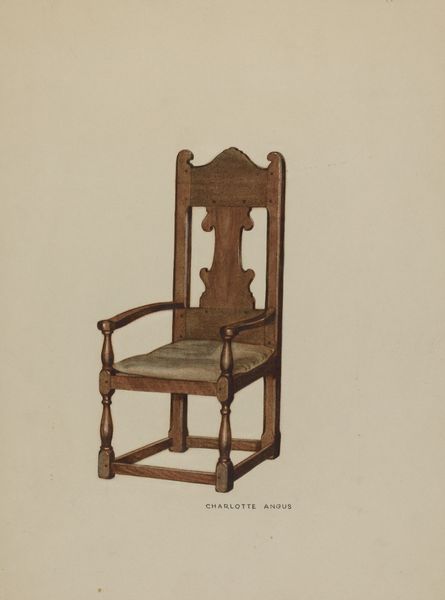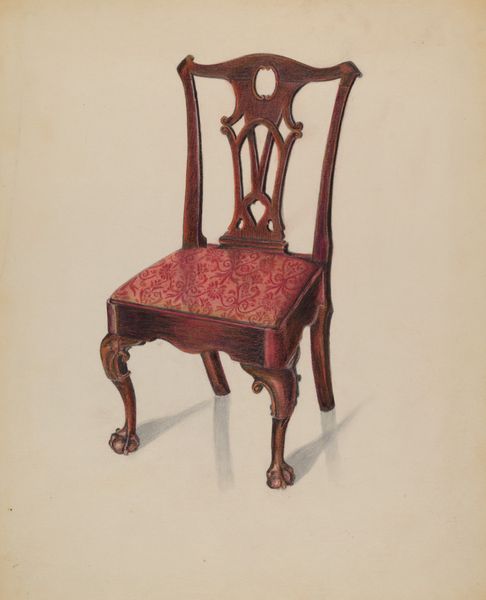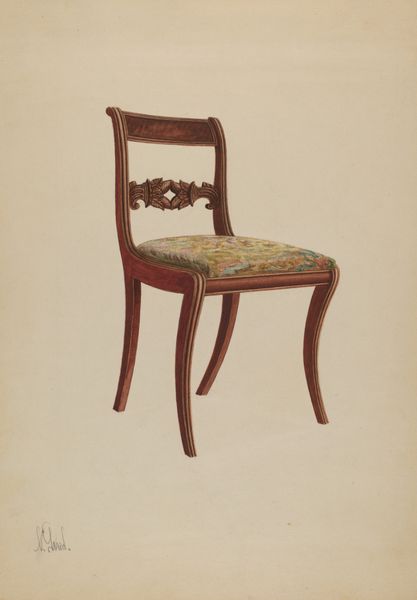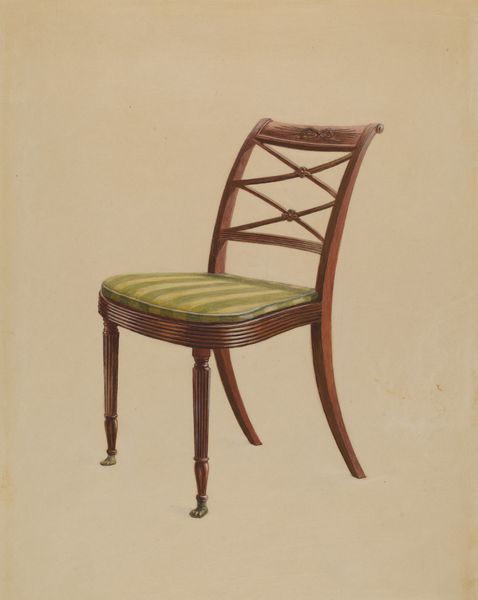
drawing, watercolor
#
drawing
#
water colours
#
watercolor
#
academic-art
Dimensions: overall: 35 x 24.2 cm (13 3/4 x 9 1/2 in.) Original IAD Object: 38" x 21" x 16"
Copyright: National Gallery of Art: CC0 1.0
Curator: Looking at "Salem Chair", a watercolor drawing executed around 1937 by William Kieckhofel, my immediate impression is of careful restraint. Editor: Yes, I see what you mean. It possesses this understated elegance, a quiet sort of formality. Almost a somber mood about it, even though it’s just a chair. Curator: The Salem chair itself, often associated with Federal-era furniture in America, carries a very specific visual vocabulary. The curves, the decorative cresting on the backrest, they evoke notions of refinement and civic virtue, referencing earlier neoclassical motifs. We are almost dealing with a type. Editor: Interesting! So it’s less about a specific chair and more about the idealized chair? And how does that translate into the rendering? Curator: In art historical terms, chairs are traditionally associated with authority. This example strikes me as a symbol of domesticity. Chairs also feature prominently as metaphorical stages and emblems for power and status in cultural memory, psychology, and history. Editor: You are thinking along the lines of Van Gogh's chair then, or perhaps thrones... Here, Kieckhofel’s meticulous watercolor technique captures the chair's construction—the careful joining of wood, the texture of the upholstery—but it is a study more than a representation of material qualities. A cool detachment prevails in that. Curator: Indeed. One notices the studding around the chair's cushion and also observes the somewhat muted color palette in relation to the decorative forms of the piece, which have had so much weight to this very day in terms of social gatherings, family, political systems, justice, and learning through symbolic sitting postures that are repeated in multiple cultures around the globe. Editor: So this isn't merely an image of a piece of furniture. By presenting this archetype, it touches on something much larger – notions of design history and even the cultural symbolism embedded within domestic objects. Curator: Precisely. It highlights the chair as a nexus of broader social and historical meanings through the centuries, even when abstracted into an icon of comfort and style, we are still engaging with its underlying narratives about status. Editor: On closer look, this object really offers such a curious confluence of objecthood, symbol, design history, and social status that one might almost simply call it a state of mind. Curator: A very fine thought, and an exquisite note on which to close.
Comments
No comments
Be the first to comment and join the conversation on the ultimate creative platform.
